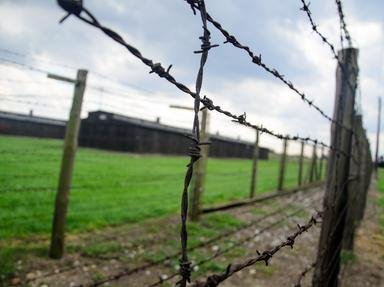Quiz Answer Key and Fun Facts
1. On the eve of World War 2, a British banker was traveling when he received a call for help from Jewish workers. When Sir Nicholas Winton saw the need of the Jewish communities, what did he establish to help over 669 children escape to the United Kingdom?
2. Aleksander Kramarovskiy was a mathematics teacher in Moscow. He became attached to a Jewish student and feared for her safety when the Nazis attacked the Soviet Union. How did he protect her from Nazi suspicions?
3. Suzanne Spaak was a mother of two and the wife of a filmmaker. What did she decide to become, after she was grieved by the Nazi treatment of the Jewish people in France?
4. Dr. Mohamed Helmy was an Egyptian doctor in Berlin. As a Muslim and an Egyptian, he sympathized with his Jewish colleagues when he was discriminated against for not fitting the Nazi view of the perfect race. Where did he hide a Jewish family friend until after the war?
5. Johanna Eck was widowed when her husband died in World War 1. When the Nazis started killing Jews during their takeover of Germany, what prompted her to save her first Jewish refugee in her home?
6. George Ferdinand Duckwitz worked with the Gestapo and had connections with leaders in Denmark. When Hitler demanded an iron fist policy, what did he do to help 7,000 Jews escape from Denmark?
7. The Hardaga family was a family of Muslims that saved a family of Jews in Bosnia. Years later, the same Jewish family saved the Hardaga family in the Bosnian Civil War.
8. Irena Sendler was a doctor who was suspended for voicing her concerns at local universities about the Nazis. How did she smuggle countless children to convents and churches that were located outside of Poland?
9. During World War 2, Dr. Eugeniusz Lazowski treated Jews for a small outbreak of typhoid. When the the Nazis invaded his Polish town, what did he tell the Nazis that convinced them not to take the Jews away?
10. When the Nazis took control of this country, many of its citizens competed with each other to protect the Jewish people. Which mountainous country on the coast of the Balkan peninsula offered refuge to the Jews based on a code of honor?
Source: Author
exceller
This quiz was reviewed by FunTrivia editor
trident before going online.
Any errors found in FunTrivia content are routinely corrected through our feedback system.
